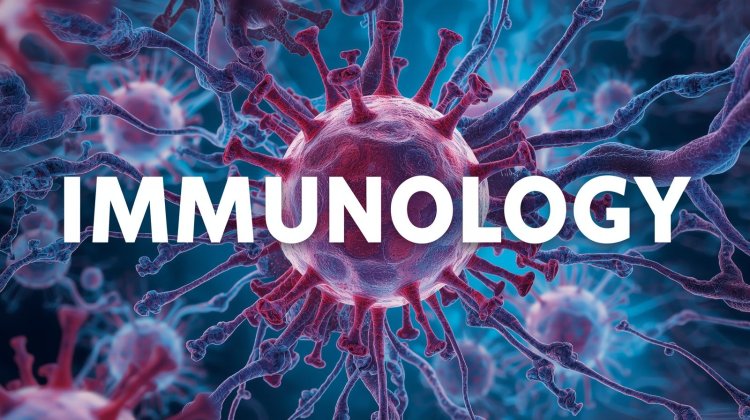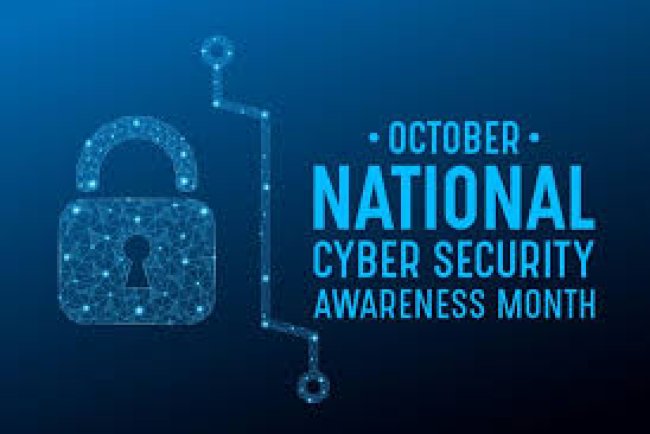Immunology: The Science of Protection and Defense
The study of the immune system, the body's defensive mechanism against infections, illnesses, and external substances, is known as immunology.

Why it matters:
Understanding immunology is crucial for
-
Developing vaccines
-
Creating immunotherapies for cancer and autoimmune diseases
-
Managing organ transplants
-
Controlling infectious diseases
What is Immunology?
The study of the immune system, the component of your body that helps keep you healthy, is known as immunology. It aids in the body's ability to identify and combat pathogens, viruses, and bacteria.
Why is the Immune System Important?
Every day, your body is exposed to many germs. The immune system works like your body's security system — it spots the invaders and destroys them before they can make you sick.
Two Main Parts of the Immune System
-
Innate Immunity (born with it)
-
First line of defense.
-
Acts fast but not specific.
-
Like skin, fever, white blood cells.
-
-
Adaptive Immunity (learned)
-
Learns to recognize specific germs.
-
Slower but more powerful.
-
Involves B cells (make antibodies) and T cells (kill infected cells).
-
Examples of How Immunology Helps Us
-
Vaccines: Teach the immune system to fight diseases without getting sick.
-
Allergies: When the immune system overreacts to harmless things like pollen.
-
Autoimmune diseases: When the immune system mistakenly attacks the body (like in type 1 diabetes).
-
Cancer treatment: Using the immune system to fight cancer cells (immunotherapy).
What Is It Made Of?
The immune system isn’t just one thing — it’s made up of many parts working together
| Part | What It Does |
|---|---|
| White blood cells | Patrol the body and fight infections. |
| Antibodies | Proteins that find and attack germs. |
| Lymph nodes | Small filters that trap germs. |
| Spleen | Helps clean the blood and fight infection. |
| Thymus | Helps some immune cells mature. |
| Bone marrow | Makes white blood cells. |
| Skin & mucous membranes | Act as a barrier to block germs. |
What is an Immune Response?
Your immune system's reaction to something dangerous, such as a virus, bacteria, or other foreign material, is known as an immunological response.
It is your body's method of identifying, combating, and eliminating invaders in order to maintain your health.
There Are 2 Main Steps
1. Innate Immune Response (fast, first defense)
-
Happens right away when something harmful enters your body.
-
It’s not specific — it attacks anything that seems dangerous.
-
Involves:
-
White blood cells (like neutrophils and macrophages) that "eat" the invaders.
-
Fever, inflammation, or swelling to trap and destroy germs.
-
Barriers like skin and mucus also count here.
-
2. Adaptive Immune Response (slower, smarter defense)
-
Happens a few days later, but it’s very specific.
-
Your body makes special cells that learn to recognize and remember the exact invader.
-
Involves:
-
B cells – make antibodies that lock onto the germ.
-
T cells – destroy infected cells or help other immune cells.
-
-
Creates immunological memory — so next time, your body responds faster (this is how vaccines work!)
What is an Antigen?
Any foreign material that enters your body and sets off an immunological reaction is known as an antigen. It is typically a protein that is present on the surface of viruses, bacteria, and other microorganisms.
Think of an antigen as a "name tag" or fingerprint that the immune system uses to recognize an invader.
Examples of antigens
-
A virus’s surface protein (like the spike protein on COVID-19)
-
Bacteria cell wall proteins
-
Pollen (in allergies)
What is an Antibody?
An antibody is a unique protein that your immune system—more especially, B cells—makes to identify and combat antigens.
Think of an antibody as a "lock" that fits exactly with the "key" of a specific antigen.
Once an antibody finds its matching antigen:
-
It sticks to it
-
Blocks it from harming you
-
Helps other immune cells destroy it
What is Immunoglobulin?
Immunoglobulin (Ig) is just another word for an antibody.
Immunoglobulin = Antibody
Your immune system (more especially, B cells) produces these proteins to identify and combat antigens, which include bacteria, viruses, and other dangerous things.
What Do Immunoglobulins Do?
- Locate antigens (foreign invaders) and cling to them.
- Assist in destroying or neutralizing the germs.
- Let additional immune cells know to join the battle.
Types of Immunoglobulins
There are 5 main types, each with a different job
| Type | Name | Function |
|---|---|---|
| IgG | Immunoglobulin G | Most common. Fights viruses & bacteria. Gives long-term protection. |
| IgA | Immunoglobulin A | Found in mucus, saliva, tears, breast milk. Protects body surfaces like the mouth and gut. |
| IgM | Immunoglobulin M | First antibody made when you're infected. Fast responder. |
| IgE | Immunoglobulin E | Involved in allergies and fights parasites. |
| IgD | Immunoglobulin D | Role not fully understood; helps start immune responses. |
What is an Antigen-Antibody Reaction?
An antigen-antibody reaction happens when an antibody (your body’s defender) binds to an antigen (a foreign invader like a virus or bacteria).
It’s like a lock-and-key fit — the antibody is shaped perfectly to match the antigen.
What Happens in This Reaction?
-
Recognition
-
Your immune system detects an antigen (a harmful substance).
-
-
Binding
-
A specific antibody binds to the antigen — like a key fitting into a lock.
-
-
Neutralization or Destruction
-
The antibody may:
-
Block the antigen so it can't infect cells.
-
Mark it for destruction by other immune cells.
-
Clump antigens together (agglutination) to make them easier to remove.
-
-
Real-Life Example: COVID-19
-
The spike protein on the virus is an antigen.
-
Your immune system makes antibodies that bind to that spike.
-
This stops the virus from entering your cells and helps destroy it.
What Are Lectins?
Proteins known as lectins have the ability to attach to sugars, or carbohydrates, found on cell surfaces. Animals, plants, and even microbes contain them.
Lectins are like "sticky" proteins that can attach to sugar molecules on cells — kind of like Velcro
Where Are Lectins Found?
-
In foods (especially plants):
-
Beans (like kidney beans, soybeans)
-
Lentils
-
Peanuts
-
Whole grains
-
Tomatoes, potatoes, eggplants (nightshades)
-
-
In animals: Some cells and proteins use lectins to recognize other cells.
-
In the immune system: Your body uses certain lectins to recognize bacteria and viruses.
Role in the Immune System
In immunology, some lectins help:
-
Recognize pathogens (bacteria, viruses)
-
Trigger immune responses
-
Help cells stick together or signal each other
Mannose-binding lectin (MBL) is part of your innate immune system. It binds to sugars on the surface of microbes and helps your body destroy them.
Functions of Lectins
Lectins have several biological roles in both plants and animals. Here are their main functions:
1. Cell Recognition and Communication
-
Lectins bind to specific carbohydrates (sugars) on the surface of cells.
-
This helps in cell-cell communication, recognition, and signaling.
2. Host Defense in Immunity
-
Lectins play a role in the innate immune system.
-
Example: Mannose-binding lectin (MBL) binds to sugars on the surface of bacteria and viruses and helps trigger immune responses.
3. Toxin Delivery
-
Some plant and bacterial lectins (like ricin) are toxic. They can bind to and enter cells, disrupting their function.
4. Role in Plants
-
In plants, lectins protect against insects and microbes by binding to sugars on their surfaces and interfering with digestion or survival.
Forensic Significance of Lectins
In forensic science, lectins are important in blood group identification and tissue analysis. Here’s how:
1. Blood Typing (Agglutination Reactions)
-
Lectins can be used to detect specific blood group antigens.
-
Example:
-
Dolichos biflorus lectin binds specifically to A1 blood group.
-
Ulex europaeus lectin binds to the H antigen (present in blood group O).
-
Forensic use: Helps identify a suspect or victim's blood type from a crime scene sample.
2. Histochemistry (Tissue Identification)
-
Lectins are used in lectin histochemistry to:
-
Identify cell types or tissue origin.
-
Detect changes in glycoproteins that occur in disease or trauma.
-
Forensic use: Can assist in determining organ/tissue source in unidentified remains or degraded samples.
3. Trace Evidence & Tissue Matching
-
Lectins can help differentiate between animal and human tissues, or even between different organs based on sugar structures.
Forensic use: Tissue or organ identification in violent crime cases, disasters, or body part recovery.
What is an Immunoassay?
An immunoassay is a laboratory test that measures and identifies substances in a sample by using the immune system's natural response, specifically the antigen-antibody interaction.
An immunoassay is a test that uses antibodies to find specific molecules (like hormones, drugs, viruses, or proteins) in blood, urine, or other samples.
How Does It Work?
-
A specific antibody is designed to bind to a target substance (called an antigen).
-
If the antigen is present in the sample, it binds to the antibody.
-
This binding is then measured using color, light, or radioactivity — depending on the type of test.
Common Types of Immunoassays
| Type | Description |
|---|---|
| ELISA (Enzyme-Linked Immunosorbent Assay) | Uses an enzyme and color change to show a positive result. Widely used in labs. |
| RIA (Radioimmunoassay) | Uses radioactive labels. Very sensitive but less common today. |
| Lateral Flow Test | Simple tests like pregnancy tests or COVID-19 rapid tests. |
| Western Blot | Detects specific proteins in a sample. Often used to confirm HIV tests. |
What Can Immunoassays Detect?
-
Hormones (e.g., insulin, hCG in pregnancy tests)
-
Drugs (drug testing)
-
Infections (e.g., HIV, hepatitis, COVID-19)
-
Allergens
-
Cancer markers
Forensic Significance
In forensic science, immunoassays are used to:
-
Detect drugs or poisons in blood, urine, or tissues
-
Identify disease exposure
-
Confirm pregnancy
-
Perform toxicology screens in autopsies or crime investigations
Techniques of Immunoassays
There are several types of immunoassays, each using different methods to detect the antigen-antibody reaction. Here's an overview of the main techniques:
1. ELISA (Enzyme-Linked Immunosorbent Assay)
-
Most commonly used lab immunoassay.
-
Uses an enzyme that reacts with a substrate to produce a color change.
-
Can be:
-
Direct
-
Indirect
-
Sandwich
-
Competitive
-
Used to detect infections (e.g. HIV, COVID-19), hormones, or drugs.
2. RIA (Radioimmunoassay)
-
Uses radioactive isotopes to label the antigen or antibody.
-
Extremely sensitive, but less commonly used today due to radiation safety issues.
Used in hormone level testing (e.g., insulin, thyroid hormones).
3. Lateral Flow Assays (LFA)
-
Rapid, portable tests (like pregnancy tests or COVID-19 rapid tests).
-
Use colored particles (often gold nanoparticles) to show results on a test strip.
Used in point-of-care testing and field testing.
4. Western Blot
-
Detects specific proteins in a sample after separating them by size.
-
Combines gel electrophoresis with antibody-based detection.
Used to confirm HIV, Lyme disease, and in research
5. Immunofluorescence (IF)
-
Uses fluorescent-labeled antibodies.
-
Viewed under a fluorescence microscope to see where antigens are located in tissues or cells.
Used in research, pathology, and autoimmune disease testing.
6. Chemiluminescent Immunoassays (CLIA)
-
Similar to ELISA but uses a light-producing chemical reaction instead of color.
-
Very sensitive and fast.
Widely used in automated clinical labs (e.g., hormone or viral testing).
Medical Diagnostics
-
Detect infectious diseases (HIV, hepatitis, COVID-19)
-
Monitor hormone levels (e.g., insulin, hCG for pregnancy)
-
Identify tumor markers in cancer (e.g., PSA, CA-125)
-
Diagnose autoimmune diseases (e.g., lupus, rheumatoid arthritis)
Follow cyberdeepakyadav.com on
Facebook, Twitter, LinkedIn, Instagram, and YouTube
What's Your Reaction?






















